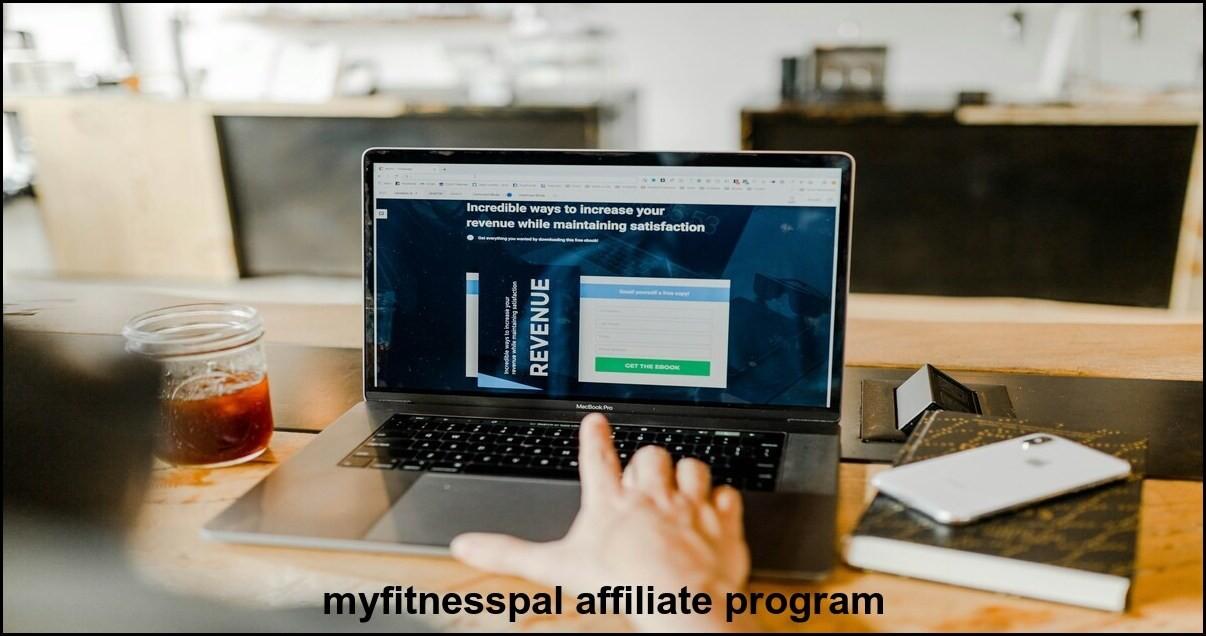1. Why Fitness Affiliates Are Growing Fast
Affiliate marketing has become one of the most sustainable ways to earn online income—especially in the health and fitness industry. Millions of people now rely on digital wellness tools to stay healthy, and fitness apps are at the heart of that movement.
Among these, MyFitnessPal stands out as a trusted brand used by over 200 million people worldwide. It helps users track calories, log workouts, and build healthier habits. For creators, coaches, and wellness-focused publishers, this presents a meaningful opportunity to earn while promoting a product that genuinely improves lives.
In this guide, we’ll explore everything you need to know about the MyFitnessPal affiliate program—how it works, how to join, proven ways to earn, and expert strategies to build lasting income ethically and effectively. This isn’t a generic “affiliate roundup” post; it’s written from the perspective of someone who’s spent years building and scaling affiliate partnerships in the fitness industry.
2. What Is the MyFitnessPal Affiliate Program?
The MyFitnessPal affiliate program allows individuals and content creators to earn a commission by promoting the MyFitnessPal app or its premium subscription. When someone signs up through your unique affiliate link, you can earn money based on the specific campaign structure.
Unlike traditional “retail” affiliate programs that offer a fixed percentage per sale, fitness app programs often work through performance-based partnerships—either through direct programs or agencies.
In MyFitnessPal’s case, its affiliate management has historically been handled through Acceleration Partners, a respected affiliate marketing agency that manages major global brands. While details may evolve, the program typically operates on a CPA (Cost Per Acquisition) or subscription-based model—meaning affiliates earn when users upgrade or subscribe via their referral links.
Before joining, it’s always best to check MyFitnessPal’s official partnerships or affiliate network pages for the latest details. Transparency and accuracy are crucial; affiliate structures sometimes shift based on region or campaign focus.
3. Why Choose MyFitnessPal for Affiliate Marketing
Choosing the right affiliate program is about more than commissions—it’s about audience alignment and trust. Here’s why MyFitnessPal stands out:
a. Global Brand Recognition
MyFitnessPal is one of the most recognizable fitness tracking apps in the world. Its credibility gives affiliates an instant trust advantage—your audience likely already knows or uses it.
b. Large, Engaged User Base
With over 200 million users and a strong presence across devices and app stores, MyFitnessPal has a deeply engaged audience that values accurate nutrition and activity tracking. This makes conversions more likely, especially when your audience already values fitness tools.
c. Natural Fit for Health and Lifestyle Content
If your platform revolves around health, wellness, nutrition, or fitness—MyFitnessPal naturally integrates into your existing content. You can promote it in calorie-counting tutorials, healthy meal plans, workout routines, or success stories.
d. Sustainable Niche
Unlike fleeting trends, the demand for fitness and wellness apps grows each year. The global digital fitness market is projected to surpass $180 billion by 2030. That means your affiliate efforts compound over time, not fade away.
e. Complementary Ecosystem
MyFitnessPal pairs well with other affiliate products—such as supplements, workout gear, or nutrition plans—allowing you to build a full funnel of related offers while staying authentic.
4. How the MyFitnessPal Affiliate Program Works
Let’s break down the process step-by-step, so you know exactly how to get started.
Step 1: Find the Current Affiliate Entry Point
MyFitnessPal has worked with Acceleration Partners for affiliate management. Visit their site or the MyFitnessPal partner page to check if applications are open. Occasionally, affiliate access may be paused or region-specific.
Step 2: Apply and Get Approved
You’ll typically need to provide:
- Your website or platform details
- Audience demographics and monthly reach
- Examples of content or social presence
Approval can take anywhere from a few days to two weeks, depending on review volume.
Step 3: Access Your Affiliate Dashboard
Once approved, you’ll get a dashboard containing your tracking links, creative assets (like banners or text links), and performance analytics. Always use the correct link structure to ensure accurate tracking.
Step 4: Promote Strategically
You can place affiliate links naturally in:
- Blog posts (e.g., “Best calorie tracking apps”)
- YouTube video descriptions
- Fitness coaching websites
- Email newsletters or social media posts
Remember: Always disclose affiliate partnerships in line with FTC and Google transparency guidelines. Readers trust honesty.
Step 5: Earn Commissions
Your earnings depend on conversions—typically when users sign up or subscribe to MyFitnessPal Premium, which offers advanced features like macro tracking, meal scanning, and in-depth progress analytics.
Step 6: Track and Optimize
Use your affiliate dashboard to monitor performance. Focus on high-converting traffic sources (like SEO blog posts and email funnels) to increase ROI.
5. Best Strategies to Maximize MyFitnessPal Affiliate Earnings
As someone experienced in affiliate content strategy, I’ve found that authentic, educational content drives the highest conversions. Here’s how you can do it right.
1. Create Content That Solves Real Problems
Instead of pushing signups, help your audience achieve specific goals.
Examples:
- “How to track macros using MyFitnessPal”
- “7 ways MyFitnessPal makes calorie tracking easier for beginners”
Problem-solving content earns both trust and traffic.
2. Leverage SEO Long-Tail Keywords
Target specific search intents:
- “MyFitnessPal Premium vs free”
- “Best apps like MyFitnessPal for weight loss”
- “How to use MyFitnessPal with Apple Watch”
These attract high-quality, ready-to-convert visitors.
3. Use Personal Experience
If you’ve used MyFitnessPal, share your results. Screenshots, progress logs, and honest experiences build credibility. Authenticity outperforms generic product reviews every time.
4. Build Multi-Platform Visibility
Promote across:
- YouTube tutorials: Demonstrate app usage visually.
- Pinterest pins: Share meal-tracking boards linking to your post.
- Email newsletters: Offer tips and gently include affiliate links.
5. Offer Complementary Value
Create a free resource—like a printable meal tracker or calorie guide—and include your affiliate link naturally inside. This adds real value before asking for conversions.
6. Track Data and Refine Content
Use analytics tools (Google Search Console, affiliate dashboards, and UTM tracking). Identify which posts or channels deliver the highest conversions and optimize those first.
6. Pros and Cons of Joining the MyFitnessPal Affiliate Program
Pros
✅ Trusted Brand: Instant credibility with a household fitness name.
✅ Engaged Audience: People actively seeking better health outcomes.
✅ High Lifetime Value: Potential for recurring commissions if premium renewals are included.
✅ Natural Fit for Content Creators: Integrates seamlessly with wellness content.
Cons
⚠️ Limited Public Commission Data: Rates may vary or not be openly published.
⚠️ Competitive Niche: Many creators promote fitness tools; differentiation is key.
⚠️ Possible Program Changes: Some affiliate access points are managed externally, not directly via MyFitnessPal.
Verdict: Despite a few challenges, the MyFitnessPal affiliate program remains a solid, trust-driven opportunity for serious fitness affiliates who value long-term brand association over short-term gains.
7. Alternatives and Complementary Fitness Affiliate Programs
If you want to diversify your affiliate portfolio, consider pairing MyFitnessPal promotions with other reputable fitness programs:
| Program | Commission Type | Focus Area |
|---|---|---|
| Fitbit Affiliate Program | CPA / Device sales | Wearable fitness tech |
| Noom Affiliate Program | CPA / Subscription | Weight management & psychology |
| WW (Weight Watchers) | Recurring / Subscription | Healthy living & community |
| Cronometer Affiliate Program | CPA | Advanced nutrient tracking |
| Goli Nutrition | Percentage of sales | Supplements & gummies |
Diversification protects you from market shifts and broadens income potential. However, promote only what you genuinely use or trust—authenticity always converts better than volume.
8. Expert Tips for Long-Term Affiliate Success
As affiliate marketers, our long-term growth depends on building relationships—not just clicks. Here are expert practices that sustain affiliate income over time.
1. Build Authority Around a Niche
Instead of covering every fitness app, specialize. For instance, create a content hub around nutrition tracking or habit-based health tools. Authority increases ranking potential and reader loyalty.
2. Prioritize Trust and Transparency
Disclose every affiliate link clearly. Add a statement like:
“This post contains affiliate links. If you sign up through these links, I may earn a small commission at no additional cost to you. I only recommend tools I genuinely use and trust.”
That simple honesty boosts conversions by reinforcing authenticity.
3. Stay Updated on Program Changes
Affiliate terms evolve—commissions, cookie durations, and eligibility rules may change. Regularly review your partner dashboard or contact your affiliate manager to stay compliant and informed.
4. Engage Your Community
Encourage feedback and discussions on your blog or social media. Readers who trust your recommendations become repeat converters.
5. Reinvest in Content Quality
Use your affiliate income to upgrade visuals, SEO tools, or expert collaborations. The better your content, the higher your conversion potential—and the more sustainable your income stream.
9. Conclusion: Turning Passion for Fitness into Passive Income
Affiliate marketing with MyFitnessPal isn’t just about earning commissions—it’s about empowering people to live healthier lives while building a business rooted in trust.
Whether you’re a fitness blogger, coach, or wellness enthusiast, MyFitnessPal offers a platform that aligns with genuine value creation. With consistent effort, authentic storytelling, and transparency, you can turn your passion for health into a reliable, long-term income stream.
Remember, successful affiliates don’t just promote—they educate, inspire, and serve. The MyFitnessPal affiliate program gives you the tools to do exactly that.
Key Takeaways
- MyFitnessPal is a globally trusted fitness tracking brand ideal for affiliate partnerships.
- Earnings depend on authentic promotion, problem-solving content, and ethical transparency.
- Long-term success comes from building audience trust, not chasing quick commissions.
FAQ (Optional Structured Data for Yoast/Rank Math)
Q1: Is the MyFitnessPal affiliate program still active?
Yes, though it’s often managed through Acceleration Partners. Check their website or MyFitnessPal’s partner page for the latest updates.
Q2: How much can I earn from promoting MyFitnessPal?
Commissions vary depending on campaign type and region. Most affiliates earn through CPA-based conversions or premium subscription signups.
Q3: Do I need a website to join?
Having a website or strong social platform helps, as it shows you can deliver quality traffic and trustworthy content.
Q4: Is MyFitnessPal a good fit for fitness bloggers?
Absolutely. It aligns perfectly with fitness, nutrition, and lifestyle audiences and offers a trusted app your readers likely already use.
You May Also Read: Chevrolet Stabilitrak Problems Causes Solutions




